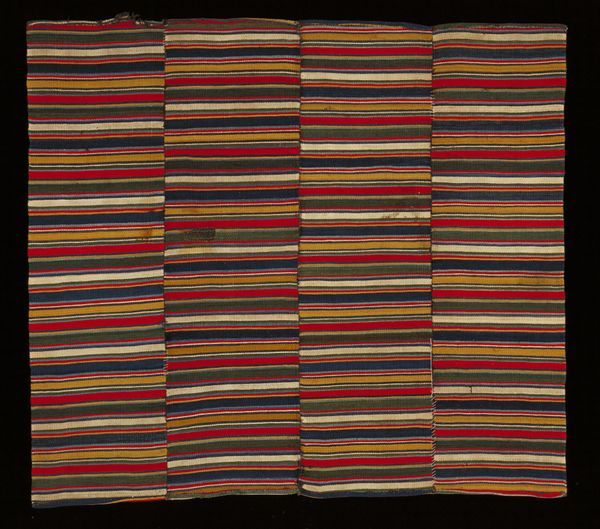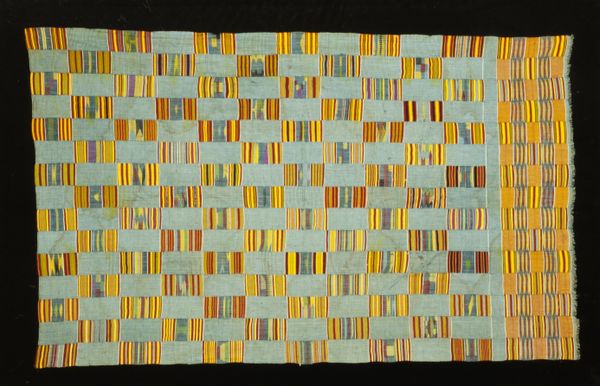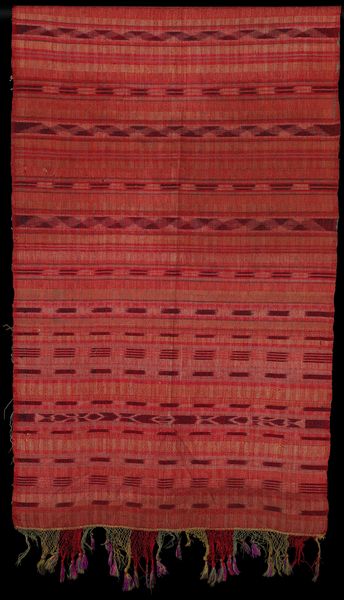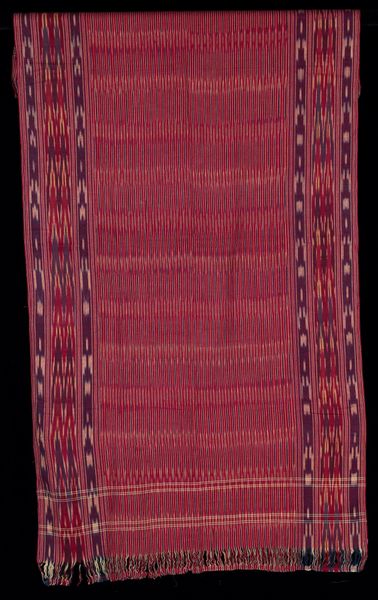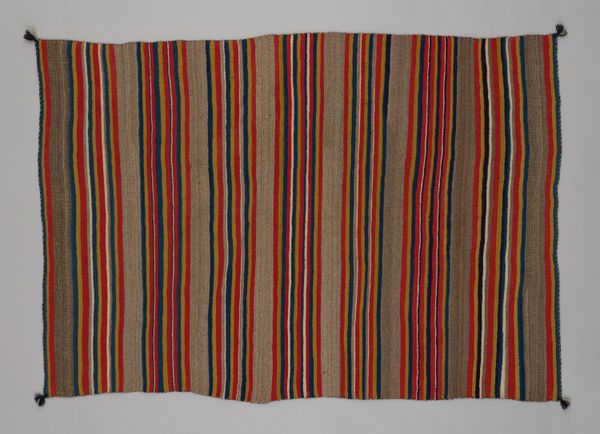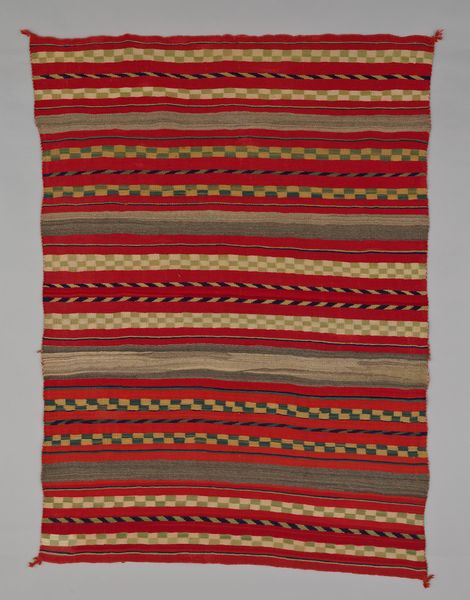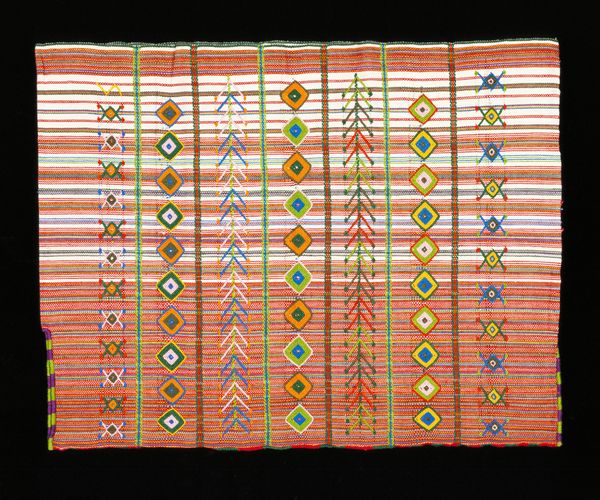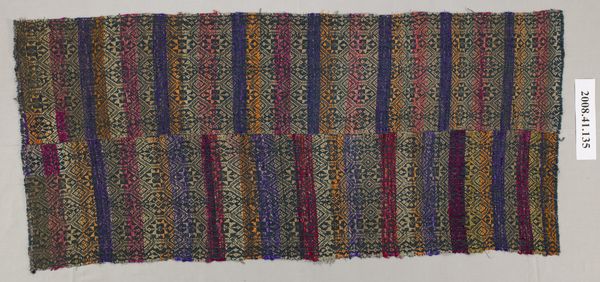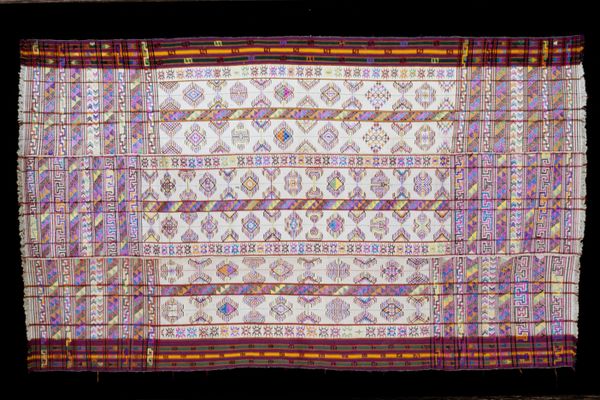
fibre-art, weaving, textile
#
fibre-art
#
weaving
#
textile
#
geometric pattern
#
geometric
#
indigenous-americas
Dimensions: 82 x 19 in. (208.28 x 48.26 cm) (includes fringe)
Copyright: Public Domain
Editor: Here we have "Saint's Rebozo," a silk textile from the early 20th century. It features these beautiful, soft-colored stripes, but something about the way the weaving is structured, especially at the sides, feels so intentional. How do you interpret this work in relation to its cultural context? Curator: It's interesting you mention the weaving structure. Textiles like this rebozo were – and are – deeply embedded in the social fabric of indigenous communities in the Americas. This piece invites us to consider the politics of adornment and the power of material culture in shaping identity. Who do you think would wear it? Editor: Given the name "Saint's Rebozo," I would assume a woman deeply connected to her faith. Curator: Precisely. Clothing holds such powerful cultural weight. Its creation is part of a system, weaving traditions literally preserve and display wealth. Who is afforded the cultural currency, the honor, of being a wearer of it? This wasn't made by a machine. It was produced and disseminated among an exclusive echelon. Editor: That is fascinating. So, you are suggesting that the creation and the wearing of an item are tied to a larger system? Curator: Absolutely. This rebozo tells a story about community, status, and the role of religious practice within a social hierarchy. Its preservation in a museum setting adds another layer to its history. Editor: I see. Thinking about this object beyond just aesthetics really changes my understanding. Curator: Exactly. That's what I hope our listeners will walk away with: an enriched perspective on material culture!
Comments
No comments
Be the first to comment and join the conversation on the ultimate creative platform.

